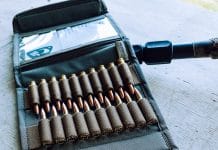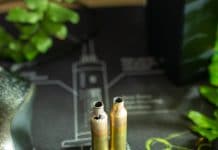The Battle of the triggers
Really, this is a question of preference – because there are benefits to both single-stage, and two-stage triggers – a lot of this is also dependant on your use. But, I get asked the question a lot during my Precision Rifle Training, so it’s worth addressing. Much like bipod selection, a little knowledge can be a dangerous thing.
Like many things in shooting – you need to work backwards from the end purpose, letting that drive certain technology choices – because, in field shooting, I think there are a few really good reasons to consider a two-stage. But more on that later.
So, in this article, we are going to cover off some of the main differences between the two and give you some reasons to help you decide between one, or the other.
Single Stage Triggers
Single-stage triggers are the simpler option, and the one that most of us are familiar with – all pistols, and most of the rifles you likely have, are likely single stage.
They are often easier to make and cheaper to purchase.
Basically, with a single-stage, you put your finger on the trigger, apply pressure and it ‘breaks’ or triggers. There should be minimal uptake/slop/slack – it should be a simple case of press and bang goes the gun.
First Rifles, First Triggers
My first rifles were all single-stage – as were likely yours. In my Browning X-Bolt – the standard trigger is still in there – hunting weight – meaning not overly light – but not military heavy, but nice and crisp. Certainly, the deer I have shot with it didn’t seem to care.
My first target rifle – a Remington 700 – had the trigger replaced in it before I even shot it for the first time. By all accounts online, it was essentially a ‘must-have’ upgrade – and – ironically, was one of the triggers that Remmington recalled not long afterwards – made no difference to me – I had already replaced it with a Timney.
Trigger weight on a single stage is important for safety – and – the main reason I now like the two-stage so much.
Trigger Weight
I wanted to go lighter trigger weight wise on my Remington 700 – but – I didn’t feel I could do so, while still being in control of the trigger, and when the gun fired – you may have experienced it already – a trigger so light, that you can’t really rest your finger on the trigger. This is fine in a benchrest or very controlled situation, but I personally feel, in a practical, field style situation (and certainly for hunting) something that light is simply irresponsible. I like to rest my finger on the trigger, once I am on target, ready to shoot and potentially just waiting for the right target presentation or the wind to settle, or something else – my finger is on the trigger, ready to break the shot when I want it to.
To have to go from finger off the trigger to just touching it to set it off is a bit too much movement being introduced into the shooting system, for my liking.
So, one way I could get around running a lighter trigger but still maintaining a level of control was the two-stage.
The Two Stage Trigger
With a two-stage trigger (such as the one in the Tikka TAC A1) – the first ‘stage’ is often misidentified as creep, and, it kinda is, but kinda isn’t.
Basically, on a two-stage, you first partially depress the trigger – it will shift back, but the gun won’t fire – at a certain point, you will then feel a ‘wall’ or – the point where the second stage of the trigger is. If you then continue to apply pressure, the trigger will break, and the gun will fire.
The Pre Stage Trigger
To me, the first stage is my takeup – or ‘pre-stage’ – it means I can rest my finger on the trigger, even load it up a little, and when I am ready for the shot to break a little more pressure, and we have ignition!
This means I can utilise a second stage that is much lighter than I ever would a single stage. In fact, I currently have the trigger on the Tikka set so light, it would be a hair-trigger1 on a single stage. But, with lots of dryfire – I am starting to discern on the very small, but perceptible wall of the second stage.
In Summary
Ultimately, I suggest you try both a single-stage and a two-stage trigger and decide for yourself – for me – it’s likely a case of a heavier single stage for hunting, and a lighter two-stage for field shooting competitions. If I take up benchrest, well, then maybe a light single? It’s a case of the right tool for the job – and it’s a case of figuring out what is right for you.
meaning, can’t touch the trigger ↩




















